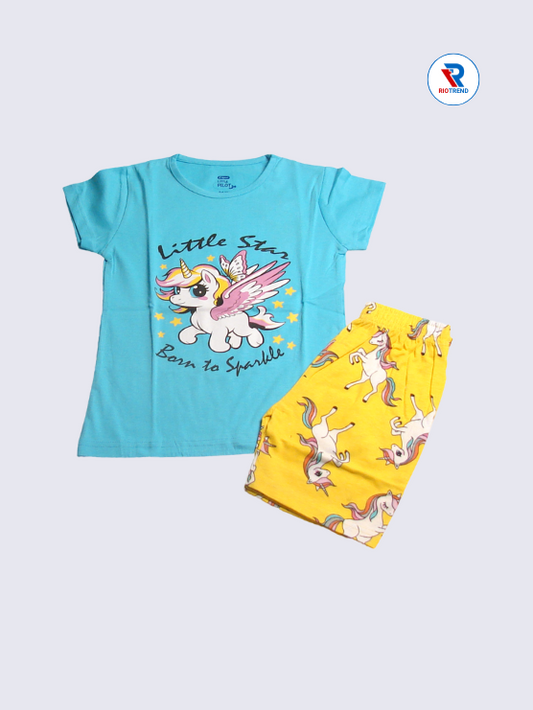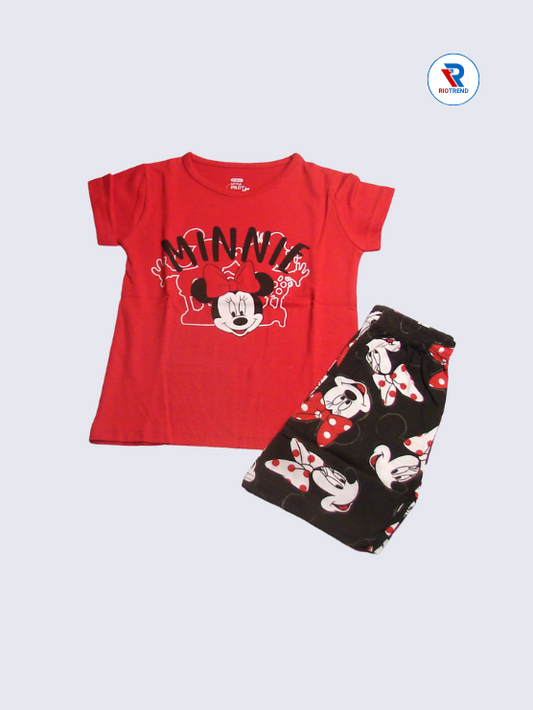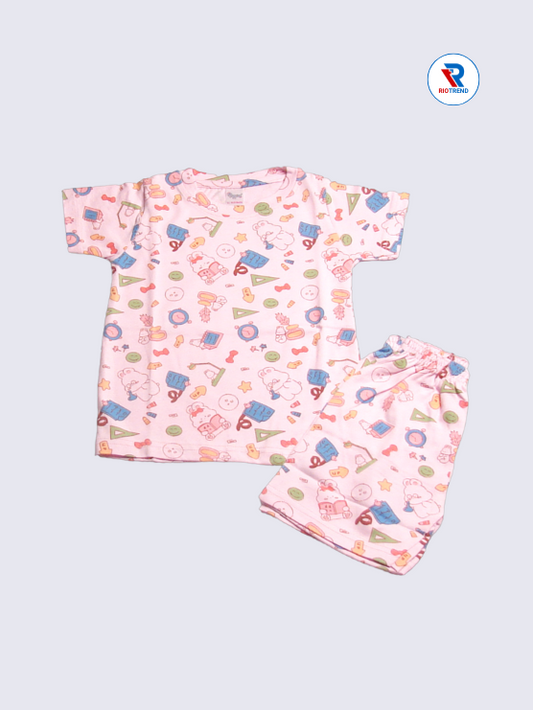Remember that moment when you saw the perfect item online, added it to your cart, then closed the browser and completely forgot about it? Or when you spent hours hunting for that amazing product you saw weeks ago but couldn't remember where? This is exactly why every smart online shopper needs a well-organized shopping Wishlist.
Think of your shopping Wishlist as your shopping assistant who never forgets, never loses track of prices, and always remembers what caught your eye. It's the difference between chaotic impulse buying and strategic, satisfying purchases that you'll love and use.
In this comprehensive guide, we'll transform you from a scattered browser into a Wishlist management expert who saves money, time, and shopping regret. Whether you're a casual online shopper or someone who treats digital shopping like a part-time job, these strategies will revolutionize how you approach online purchasing.
What Is a Shopping Wishlist?
A shopping Wishlist is a curated collection of products that you're interested in purchasing but aren't ready to buy immediately. It's your catalog of "maybes" and "somedays" that helps you organize your shopping desires and make more thoughtful purchasing decisions.
Unlike a shopping cart, which is designed for immediate purchase, a Wishlist serves as a holding space for items you want to consider, research, or wait for at the right price. It's essentially your shopping memory bank that prevents great finds from disappearing into the vast digital marketplace.
Modern shopping Wishlist's go far beyond simple product bookmarking. They're sophisticated tools that can track price changes, monitor availability, send alerts about sales, and help you organize items by priority, category, or occasion. The best Wishlist's become strategic shopping tools that actively help you make better purchasing decisions.
The psychology behind Wishlist's is fascinating too. They satisfy our natural collecting instincts while providing the delayed gratification that often makes eventual purchases more satisfying. When you finally buy something you've been wish listing for weeks or months, the satisfaction is significantly higher than impulse purchases.
What Creates Effective Wishlist Management and How It Works?
The Science Behind Smart Wish Listing
Effective Wishlist management isn't just about adding products randomly – it's a strategic approach that combines organization, timing, and decision-making psychology. The most successful Wishlist users understand that their lists are dynamic tools that require regular attention and curation.
Categorization Systems form the backbone of professional Wishlist management. Smart shoppers organize their Wishlist by categories such as immediate needs, seasonal items, gift ideas, luxury wants, and replacement items. This organization makes it easier to prioritize purchases and find specific items when needed.
Priority Ranking helps distinguish between true needs and passing wants. Professional Wishlist managers assign priority levels to items, often using systems like "must-have," "nice-to-have," and "dream items." This ranking system becomes invaluable during sales events or when budgeting decisions need to be made.
Research Integration transforms Wishlist's from simple product collections into comprehensive buying guides. Savvy shoppers use their Wishlist to collect product reviews, price comparisons, alternative options, and detailed specifications that inform eventual purchasing decisions.
The Technology Behind Modern Wishlist's
Today's Wishlist technology offers sophisticated features that make list management more powerful and automated. Price Tracking capabilities monitor your wish-listed items for price drops, sales, and special offers. This automation means you never miss a good deal on items you're already considering.
Availability Alerts notify you when out-of-stock items become available again. This feature is particularly valuable for limited edition items, seasonal products, or popular items that frequently sell out.
Cross-platform synchronization ensures your Wishlist is accessible across all your devices and shopping platforms. Whether you're browsing on your phone during lunch or shopping on your laptop at home, your carefully curated lists remain consistent and up-to-date.
Social Integration allows you to share specific Wishlist items or entire lists with friends and family. This feature is invaluable for gift-giving occasions and helps others understand your preferences and current interests.
How Do Shopping Wishlist's Impact Online Shopping Experience?
The Decision-Making Revolution
Shopping Wishlist fundamentally changes how we make purchasing decisions online. Instead of impulse-driven buying, Wishlist encourages thoughtful consideration and comparison shopping. This shift typically results in higher satisfaction rates and fewer regretful purchases.
The "cooling off" period that Wishlist's naturally create is psychologically powerful. Items that seem essential at the moment often lose their appeal after sitting on a Wishlist for a few days or weeks. This natural filtering process helps shoppers distinguish between genuine needs and temporary wants.
Wishlist's also enable better budget management by providing a clear view of pending purchase interests. When you can see all your potential purchases in one place, it becomes easier to prioritize spending and make strategic decisions about timing and necessity.
The Shopping Efficiency Factor
From an efficiency standpoint, Wishlist eliminates the frustration of trying to relocate items you've previously seen. Instead of spending valuable time recreating searches or browsing through browsing history, your Wishlist serves as a reliable product index.
During major shopping events like seasonal sales or special promotions, Wishlist's become invaluable time-savers. Instead of frantically searching for deal-worthy items, you can quickly review your pre-curated list and focus on items you've already researched and wanted.
The comparative shopping process also becomes more systematic with Wishlist's. You can collect similar items from different retailers, compare features and prices side-by-side, and make informed decisions based on comprehensive information rather than limited immediate browsing.
The Social Shopping Evolution
Wishlist's have transformed online shopping from a solitary activity into a potentially social experience. Shared wish lists facilitate better gift-giving by providing friends and family with clear insight into your preferences and current interests.
The collaborative aspect of modern Wishlist's allows couples, families, or roommates to coordinate purchases, avoid duplications, and make group decisions about shared items. This collaboration is particularly valuable for household purchases, gifts, and group activities.
Wishlist sharing also creates opportunities for group buying, where friends can coordinate purchases to take advantage of bulk discounts or share shipping costs for similar items.
Smart Online Shoppers Need to Understand Wishlist Strategy
The Psychology of Want vs. Need
Understanding the psychological aspects of Wishlist management is crucial for making it an effective tool rather than just another way to accumulate digital clutter. Smart shoppers use their Wishlist to distinguish between emotional wants and practical needs.
The 24-hour Rule is a simple but effective strategy where items must spend at least 24 hours on your Wishlist before purchase consideration. This cooling-off period allows initial excitement to settle and enables a more rational evaluation of the item's value and necessity.
The Monthly Review Process involves regularly examining your Wishlist to remove items that no longer interest you, update priorities, and identify patterns in your shopping desires. This review often reveals insights about your shopping habits and helps refine future Wishlist strategies.
The Occasion-Based Organization helps align purchases with appropriate timing. Items can be categorized by season, special events, or life circumstances, ensuring that purchases happen when they're most relevant and useful.
Strategic Timing and Price Optimization
Professional Wishlist management includes understanding optimal purchase timing for different types of products. Seasonal Strategy involves adding items to the Wishlist well before their peak seasons, allowing you to monitor prices and purchase during off-season sales.
Price Threshold Setting involves determining your maximum acceptable price for each wish-listed item. When prices drop to or below your threshold, you can confidently make purchases knowing you're getting good value.
Bundle Opportunity Recognition means watching for opportunities to combine multiple Wishlist items into cost-effective bundles or to coordinate purchases to meet free shipping thresholds.
Sale Event Preparation transforms your Wishlist into a strategic tool for major shopping events. Instead of being overwhelmed by sale options, you can focus on pre-identified items that you've already researched and wanted.
Quality Control and List Hygiene
Maintaining a high-quality Wishlist requires regular curation and management. Duplicate Management involves identifying and removing similar items, keeping only the best option in each category.
Dead Link Maintenance includes regularly checking that wish-listed items are still available and updating links or finding alternatives for discontinued products.
Review Integration means using your Wishlist as a research hub where you collect and organize product reviews, comparison information, and user experiences that inform purchasing decisions.
Priority Calibration involves regularly reassessing item priorities based on changing needs, circumstances, and preferences.
Benefits of Professional Wishlist Management
Financial Advantages
Well-managed shopping wish lists provide significant financial benefits through improved purchasing decisions and better deal recognition. Impulse Control is perhaps the most immediate financial benefit, as wish lists naturally introduce decision delays that reduce regrettable purchases.
Price Optimization becomes systematic when you're tracking multiple items over time. You begin to recognize normal price ranges, identify genuine sales, and avoid paying inflated prices during high-demand periods.
Budget Allocation improves when you have a clear view of all your potential purchases. You can better distribute your shopping budget across different categories and make strategic decisions about timing and priority.
Opportunity Cost Recognition develops as you maintain wish lists over time. When you see all your potential purchases together, it becomes easier to make trade-off decisions and choose items that provide the best value or satisfaction.
Time and Stress Reduction
Wishlist management significantly reduces shopping-related stress and time waste. Decision Fatigue Reduction occurs because much of your decision-making happens during quiet Wishlist curation rather than during high-pressure shopping sessions.
Search Time Elimination means you spend less time trying to relocate items you've previously found interesting. Your Wishlist serves as a reliable product index that saves countless hours of repetitive searching.
Research Organization centralizes all your product research in one accessible location. Instead of bookmarking review pages or keeping mental notes about product features, everything is organized within your Wishlist system.
Shopping Session Efficiency improves dramatically when you can quickly access pre-researched items rather than starting from scratch each time you shop.
Enhanced Satisfaction and Reduced Regret
Items purchased after spending time on wish lists typically provide higher satisfaction rates than impulse purchases. Considered Purchases feel more intentional and aligned with your actual needs and preferences.
Anticipation Enhancement means that items you've been wish listing and waiting for provide additional satisfaction through the anticipation period. The delayed gratification makes eventual purchases more rewarding.
Reduced Buyer's Remorse occurs because Wishlist purchases are typically better researched and more carefully considered than impulse buys.
Better Product Fit results from the extended consideration period, where you have time to think about how items will fit into your life, space, and existing possessions.
Advanced Wishlist Management Techniques
Multi-Platform Strategy
Professional Wishlist managers often maintain lists across multiple platforms to maximize their advantages. Platform-specific benefits mean using each platform's unique features – some excel at price tracking, others at availability alerts, and others at social sharing.
Cross-reference systems help ensure you're getting the best deals by comparing the same items across different platforms. This approach often reveals significant price differences and exclusive offers.
Backup and Portability strategies ensure your carefully curated lists aren't lost if platforms change their policies or shut down. Smart managers maintain their backup records of important Wishlist items.
Seasonal and Event-Based Management
Advanced users organize their Wishlist activities around calendar events and seasons. Holiday Preparation involves curating gift lists well in advance, allowing time for price monitoring and thoughtful selection.
Seasonal Rotation means actively managing items based on relevance – moving winter items to lower priority during summer and vice versa.
Life Event Integration includes creating specific wish lists for major life changes like moving, job changes, or relationship milestones that might require specific purchases.
Analytics and Pattern Recognition
Sophisticated Wishlist users track their patterns and behaviors to improve their shopping strategies. Purchase Pattern Analysis reveals insights about your shopping habits, preferred price points, and decision-making timelines.
Satisfaction Tracking involves monitoring how satisfied you are with items that were purchased from wish lists versus impulse purchases, helping refine your Wishlist strategies.
Trend Recognition helps identify whether your shopping interests are shifting over time, allowing you to adjust your Wishlist strategies accordingly.
Shopping Wishlist FAQs
How many items should I keep on my shopping Wishlist?
There's no perfect number, but most effective Wishlist managers keep between 20-50 active items across all categories. The key is maintaining a list that's large enough to provide good options but small enough to review regularly. If your Wishlist becomes overwhelming, it loses its effectiveness as a decision-making tool. Consider creating separate lists for different categories (immediate needs, gift ideas, dream items) to keep each list manageable. Remember that wish lists should be dynamic – regularly remove items that no longer interest you and add discoveries. The goal is a curated collection that genuinely reflects your current interests and needs, not a comprehensive catalog of everything you've ever liked online.
Should I add items to my Wishlist immediately when I see them, or wait and think about it first?
Add items immediately when you see them – that's the whole point of a Wishlist! The Wishlist itself serves as your "thinking" space where items can sit while you consider them properly. The danger of waiting is that you'll forget about items or won't be able to find them again later. However, implement a review system where you regularly go through your Wishlist to remove items that no longer interest you. Many successful Wishlist users follow the "add first, evaluate later" approach, and then use regular review sessions to curate their lists. This method captures opportunities while still providing thoughtful consideration that makes wish lists valuable for smart shopping decisions.
How often should I review and update my shopping Wishlist?
Aim for a thorough Wishlist review at least once a month, with quick weekly check-ins for high-priority items. Monthly reviews should involve removing items that no longer interest you, updating priorities based on changing needs, and checking for price changes or availability updates. Weekly check-ins can focus on monitoring items you're actively considering purchasing. During major sale events or seasonal transitions, more frequent reviews become valuable. Some experienced Wishlist managers also do quarterly "deep cleans" where they completely reorganize their lists and reassess their shopping priorities. The key is finding a rhythm that keeps your Wishlist current and useful without becoming a time-consuming chore.
Is it better to use one master Wishlist or separate lists for different categories?
Most effective Wishlist managers use a combination approach: separate lists for major categories but not so many that management becomes overwhelming. Common category divisions include immediate needs, seasonal items, gift ideas, home goods, personal items, and dream purchases. This organization makes it easier to focus on relevant items during specific shopping sessions and helps with budget allocation. However, avoid creating too many micro-categories, as this can make list management complex and time-consuming. Start with 3-4 broad categories and adjust based on your shopping patterns. Some platforms also allow tagging systems that provide category benefits while maintaining a single list structure. Choose the approach that feels most natural for your shopping style and stick with it consistently.
How do I avoid my Wishlist becoming just another form of endless window shopping?
Transform your Wishlist from a passive collection into an active shopping tool by implementing decision-making systems and regular action triggers. Set specific criteria for moving items from Wishlist to purchase, such as price thresholds, seasonal relevance, or priority rankings. Use time-based triggers like "if it's been on my Wishlist for three months and I still want it, I'll buy it during the next sale." Implement monthly purchase quotas where you commit to buying one or two items from your Wishlist. Most importantly, use your Wishlist for research and comparison rather than just collection – add notes about why you want items, compare similar products, and track price changes. This active engagement transforms Wishlist browsing into productive shopping preparation rather than endless browsing.
What should I do when wish-listed items go out of stock or get discontinued?
Don't panic – this is a common Wishlist challenge with several good solutions. First, check if the item is temporarily out of stock or permanently discontinued by contacting the retailer or checking the manufacturer's website. For temporarily unavailable items, set up restock alerts if available, or check back periodically. For discontinued items, use your Wishlist notes about why you wanted the item to search for similar alternatives. Often, newer versions or competitor products can meet the same needs. Consider this an opportunity to reassess whether you need the item – if you can't find a suitable alternative, maybe it wasn't as important as you thought. Save discontinued item information in case it becomes available again through secondary markets, but don't let unavailable items clutter your active Wishlist. Move them to a separate "watching" list if you want to keep track of them.









